GRAN CANARIA
Religion

Religion
Cities in GRAN CANARIA
| Maspalomas | Playa de taurito | Playa del ingles |
Popular destinations SPAIN
| Andalusia | Catalonia | Costa blanca |
| Costa brava | Costa del sol | El hierro |
| Formentera | Fuerteventura | Gran canaria |
| Ibiza | La gomera | La palma |
| Lanzarote | Mallorca | Menorca |
| Tenerife |
Religion
The Christian faith was established with the arrival of the Spaniards in the Canary Islands. Fathers of different orders of monks founded monasteries and chapels and ensured the Christianization of the Guanches, the original population of the Canary Islands.
The Canarians are almost 100% Catholic and have built many churches in honor of the Blessed Virgin Mary. In addition to the regular national church holidays, many Marian feasts and days of remembrance of a large number of saints are also celebrated exuberantly. During pilgrimages ("romerias") images of Mary, Jesus or other saints are carried.
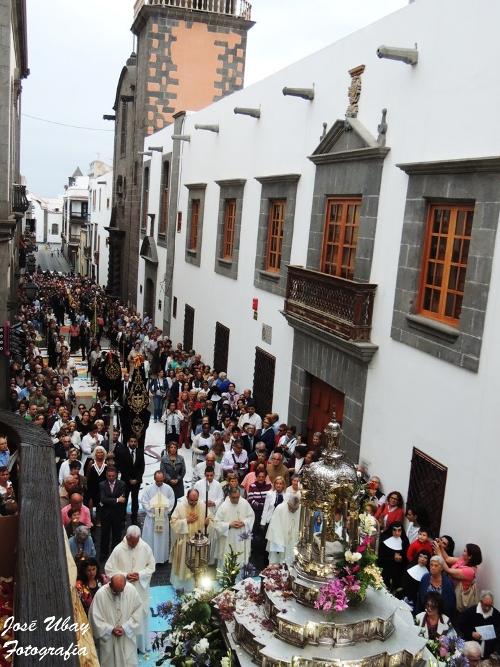 Gran Canaria ProcessionPhoto: Ubayrbd CC 3.0 Unported no changes made
Gran Canaria ProcessionPhoto: Ubayrbd CC 3.0 Unported no changes made
The patron saint of the Canary Islands is Candlemas or "Virgen de la Candelaria"; the patron saint of Gran Canaria is Our Lady of the Pine or "Nuestra Señora del Pino". San Telmo is the patronage of fishermen and seafarers. The Fiestas de la Cruz are festivities in cities and towns that have the word "Santa Cruz" in their name.
Roman Catholic church services are held on Sundays in most places in Gran Canaria. In the tourist centers, mass is also often read in foreign languages, and in the Templo Ecumenico in Playa del Inglés, Protestant church services and Dutch-speaking Catholic services have been held in winter in the winter. Las Palmas has a synagogue.
Gran Canaria is its own diocese; the bishop resides in Las Palmas and belongs to the Archdiocese of Seville.
Important religious holidays in Gran Canaria are:
| January 6 Los Reyes (Epiphany) |
| March / April Semana Santa (Holy Week processions) |
| May / June Fiestas de Corpus Christi (Corpus Christi) |
| July 16 Fiesta del Carmen (in Las Palmas and Mogán) |
| July 25 Romerías de Santiago Apóstol (in honor of Saint James |
| August 5 Fiesta de Nuestra Señora de las Nieves (in Agaete) |
| August 15 Assumption of the Virgin Mary |
| September 6-8 Romería de la Virgen del Pino (in Teror) |
| 2nd Saturday October Fiesta de Nuestra Señora de la Luz (in Las Palmas) |
| November 1 All Saints' Day |
| December Fiestas de Santa Lucía (in Santa Lucía de Tirajana) |
| December 8 Mary Immaculate Conception |
Some important or special church buildings:
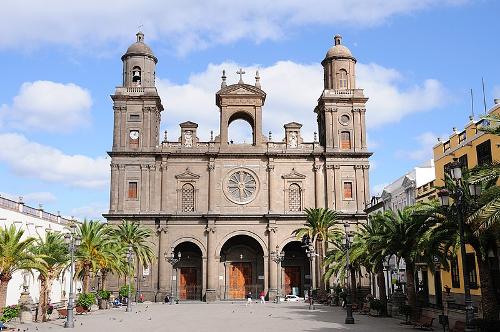 Cathedral of Saint Anne, La Palmas Gran CanariaPhoto: Alejandroclemente CC 3.0 Unported no changes made
Cathedral of Saint Anne, La Palmas Gran CanariaPhoto: Alejandroclemente CC 3.0 Unported no changes made
Catedral de Santa Ana (Las Palmas): construction started in 1497, it was not until the 19th century that the five-aisled church was more or less completed. Due to lack of money, however, the left aisle on the north side is still only a few meters high. Due to its long construction history, the church has become a mixture of Gothic, Renaissance, Baroque and Neoclassical elements.
The cathedral is particularly interesting because of the many 16th, 17th and 18th century works of art that can be seen in the church and the accompanying Diocesan Museum of Sacred Art.
Iglesia de San Juan Bautista (Arucas): construction started in 1909; the actual completion did not follow until 1977. Despite its very large dimensions, the neo-Gothic church is often incorrectly referred to as a cathedral, but is widely regarded as the most beautiful building on the island. It is also the highest church in Gran Canaria at 60 meters. A striking feature is the statue of the reclining Christ, "El Cristo Yacente", made by the sculptor Manuel Ramos.
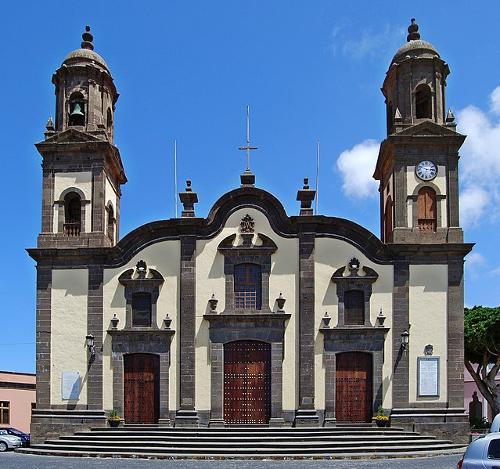 Santa María de Guía, Gran CanariaPhoto: Felix König CC 3.0 Unported no changes made
Santa María de Guía, Gran CanariaPhoto: Felix König CC 3.0 Unported no changes made
Santa Maria Church (Santa María de Guía): The church organ was inaugurated in 1900 by the famous French composer Camille Saint-Saëns, who regularly stayed in Gran Canaria. The neoclassical church was created by José Luján Pérez, the sculptor-architect, who was born in this place.
Ermita de la Virgen de las Nieves (Puerto de las Nieves): in the 16th century, the interior was enriched with a triptych by the painter Joos van Cleve from the southern Netherlands. Can only be admired in the month of August.
Iglesia de San Juan Bautista (Telde): dating back to the 15th century, making it one of the oldest churches in Gran Canaria. Scenes from the life of Mary can be seen on a beautiful Flemish wooden altar panel from the 15th century. Above the altar hangs a man-sized statue of Christ, which weighs only about seven kilos. It is made from a type of gruel prepared from the pith, leaves and roots of the corn plant. Created in Mexico in the 16th century by Tarascan Indians, it is a reminder of trade between the New World and the Canary Islands.
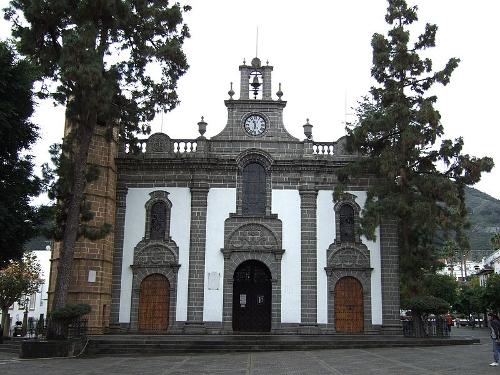 Basilica de Nuestra Señora del Pino, Gran CanariaPhoto: Fhu CC 3.0 Unported no changes made
Basilica de Nuestra Señora del Pino, Gran CanariaPhoto: Fhu CC 3.0 Unported no changes made
Basilica de Nuestra Señora del Pino (Teror): this baroque basilica, built in classic colonial style, was built between 1760 and 1767. In a large niche on a high altar is the miracle statue of Nuestra Señora del Pino (Our Lady of the Pine Tree). On September 8, 1492, according to legend, Mary appeared here on the branches of a pine tree to the island's first bishop, Juan Frias. On September 8, people from far and wide flock to Teror in honor of the patroness of Gran Canaria. Pilgrims from South America even come to this pilgrimage. The statue of Mary is then carried through the streets of Teror, and Teror is considered the religious heart of Gran Canaria.
Santiago de los Caballeros Church (Gáldar): Designed at the end of the 18th century by Diego Nicolás Eduardo, who was also responsible for the construction of Las Palmas Cathedral. The early classical church has the largest organ in the Canary Islands with 4,700 pipes. The first Guanches were baptized in the 15th century green-colored baptismal font.
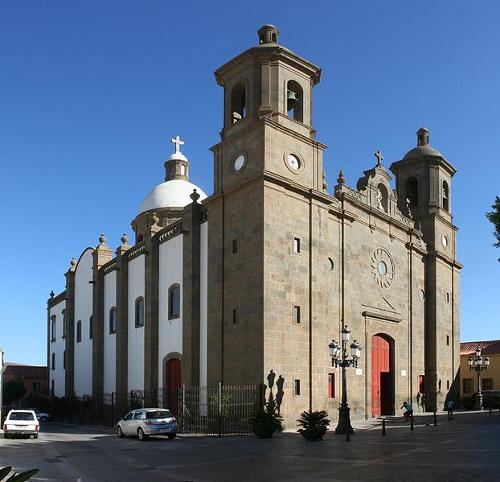 San Sebastian Church in Agüímes, Gran CanariaPhoto: Victor R Ruiz CC2.0 Generic no changes made
San Sebastian Church in Agüímes, Gran CanariaPhoto: Victor R Ruiz CC2.0 Generic no changes made
San Sebastián Church (Agüímes): this neoclassical church has a very high historical value and is therefore a "Monumento Historico Artistico Nacional". The church has 17th and 18th century paintings and sculptures by Luján Pérez. At the main altar are a white marble baptismal font and a unique Spanish clock. Agüímes was the episcopal see of Gran Canaria from 1483 to 1811.
Santuario de la Virgen de la Cuevita (Artenara): this is a small cave church (80 m2), of which the altar, surmounted by the statue of the Virgin Mary and her child Jesus, and the pulpit are carved out of the rock. The church is dedicated to the patron saint of folk musicians and cyclists.
The main churches have three naves with some side chapels. Special are the wooden ceilings, characteristic of the architecture of the "mujédars". The mujédars were Moors who developed their own art style in areas reclaimed by Christians.
The mostly 17th-century baroque high altar often covers the entire back wall of the church and is richly decorated with many images of saints. Each church has several altars. The oldest statues were made by Spanish, but also often by Flemish sculptors.
Sources
Anderson, B. / Gran Canaria
Deltas
Evers, K. / Gran Canaria, Fuerteventura, Lanzarote
Gottmer/Becht
Gruschwitz, B.F. / Canarische Eilanden
Het Spectrum
MacPhedran, G. / Gran Canaria
Kosmos-Z&K
Rokebrand, R. / Reishandboek Gran Canaria
Elmar
Weniger, S. / Gran Canaria
Van Reemst
CIA - World Factbook
BBC - Country Profiles
Copyright: Team The World of Info